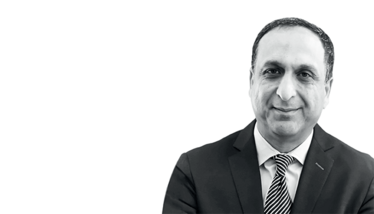(Fibro)Blast off!
In regenerative medicines and therapeutics, fibroblasts can offer significant advantages over stem cells
Hamid Khoja | | 4 min read | Opinion

In 2012, the Nobel prize in Physiology or Medicine was awarded to John B. Gurdon and Shinya Yamanaka for their groundbreaking work on reprogramming mature cells into pluripotent stem cells capable of developing into any tissue type. Although the term stem cell was coined in 1868 by a German biologist, Ernst Haeckel, it was mainly used by scientists focused on the field. However, due to the media coverage and interest in the amazing potential of these cells, by the start of the 21st century, “stem cell” became a familiar term to everyone – scientists and non-scientists alike – spurring an incredible increase in academic and industrial funding that has, to date, exceeded US$100 billion worldwide.
Two decades later, stem cells still hold incredible potential for curing chronic and hereditary diseases by regenerating physical and age-related damaged tissues. There are hundreds of clinical trials investigating their utility for multiple clinical outcomes, and more are added every month.
However, despite all the success in preclinical studies on stem cells, fully fledged clinical trial successes have been few and far between. In fact, they have exposed significant limitations in cell sourcing, isolation, and culturing – impacting the use of stem cells in a clinical setting.
Over the years, stem cell sourcing has faced significant ethical, political, and religious pushbacks. In the US, these hurdles severely impacted the use of fetal tissue in government-funded research; losing such a rich source of stem cells pushed researchers to develop alternative sourcing methods. One particular method involves epigenetically and chemically reprogramming cells to become pluripotent. Unfortunately, this process is complex, low-yield, and time-consuming, limiting its use in a clinical setting.
Another method sources stem cells directly from tissues, such as bone marrow or adipose tissue, but stem cells derived from these sources are quite rare. For example, the bone marrow – a primary source of stem cells – contains one stem cell for every 10,000 to 100,000 nucleated cells, exerting tremendous pressure on cell isolation methodologies and creating a significant pipeline bottleneck. Developing sufficient quantities for preclinical and clinical testing in this way is a tall order.
Culturing isolated stem cells is yet another rate-limiting step that has been difficult to resolve. A doubling time of 24–48 hours, a limit of 3–8 passages (the number of times a cell culture is harvested and reseeded) in culture, and strict culture media requirements add significant complexity to the process and cost of using stem cells broadly in a clinical setting.
Fibroblasts – the answer to stem cell issues?
These inherent limitations have pushed scientists to seek alternative cell types. Enter fibroblasts – one of the most abundant cell types in the human body, present in all tissues and systems – which demonstrate many of the same characteristics as stem cells. Publications have demonstrated the presence of 10,000–15,000 fibroblasts for every stem cell, rendering their sourcing a considerably more straightforward affair.
Like stem cells, fibroblasts can differentiate into many cell types, including chondrocytes (cartilage-forming cells), adipocytes (fat cells), cardiomyocytes (heart cells), hepatocytes (liver cells), osteocytes (bone cells), and epithelial and endothelial cells, making them an ideal candidate for use in clinical applications involving tissue regeneration. Researchers have also shown that fibroblasts’ immune modulation capability is superior to that of adipose and bone marrow-derived stem cells, rendering them a potential candidate for use in treating autoimmune disorders, such as multiple sclerosis, arthritis, and lupus.
Fibroblasts also lack the limitations facing the sourcing, isolation, and culturing of stem cells. Excess tissues from surgeries can serve as a primary source of allogeneic fibroblasts. A single dermal punch from a patient can also serve as a sufficient source of autologous fibroblasts for most clinical applications. Isolation of fibroblasts from tissues is also more streamlined and straightforward because the many subtypes of fibroblasts have been well characterized.
Fibroblasts are more robust than stem cells; they have a significantly lower doubling time (averaging 16–24 hours) and are stable for up to 15 passages. The culture media requirements for expanding fibroblasts are also less stringent than those of stem cells; they do not require costly additives, reducing the complexity and cost of growing high-quality, reproducible, and consistent batches of fibroblasts for clinical applications.
Despite the various benefits of these cells for the regenerative medicine field, clinical success with either fibroblasts or stem cells would be phenomenal news. Scientists and clinicians alike would stand to gain, and the positive clinical and economic implications for patients would be significant. Moreover, the growing volume of peer-reviewed articles backing the potential of both should provide us all with a source of excitement and hope for the future.
Hamid Khoja, Chief Scientific Officer, FibroBiologics















